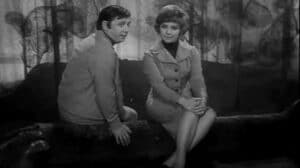The Bremen Town Musicians (Бременские музыканты) is one of the first animated rock operas released in the USSR. It has since become popular among all generations, first in the Soviet Union and later gained reputation internationally. One of the film’s main draws was its unforgettable soundtrack and style, which drew from the latest global fashions of the late 1960s, which was quite unusual for Soviet films at the time. The film premiered in 1969 in the USSR, then had official premieres in Finland, Poland, and Brazil. The entire film is sung – with song carrying all the action and story development.
The Grimm Plot of The Bremen Town Musicians
The story begins with a scene of a brave young man, Troubadour, who travels the country with his talented friends – a donkey, a dog, a cat, and a rooster – to create and perform various plays based on the events occurring around them. Entertaining the public is the only source of income for them all, but it’s something they are passionate about and feel they were born to do.

The film covers a long and adventurous trip they take with problems that need to be solved and moments they enjoy enormously. First, the artists encounter a castle where Troubadour falls in love at first sight with the princess, but the king disapproves of their relationship and kicks the artists out of the castle. The Bremen Town Musicians then use their acting skills to convince the king of Troubadour’s love and valor.
The film is based on a Grimm’s fairy tale, also known as The Bremen Town Musicians. Both stories have a similar plot, but the movie, of course, expands the plot of the very short story considerably. First, it adds the character of Troubadour as the leader of the pack (in the story, there is “a man” who owns a donkey, but the adventure begins when the donkey leaves the man and the donkey eventually forms the group as the main character. The setting in the story is a mere hut, not a castle, and there is no king nor a royal love interest, just four animals outsmarting some robbers and gaining a new home.
Criticism and Fame for The Bremen Town Musicians
Produced by Soyuzmultfilm, the USSR’s largest animation studio, this film gave a massive boost to the careers of many of those involved in it. Director Inessa Kovalevskaya later worked on other well-known projects like Katerok (Катерок) and Children’s Album (Детский альбом). Oleg Anofriev’s voicing career began after this animation, and he was a part of other widely supported films like How the Lion and the Turtle Sang a Song (Как Львёнок и Черепаха пели песню) and Very Blue Beard (Очень синяя борода). Gennady Gladkov, the composer, became very successful after The Bremen Town Musicians as well, his later projects including 38 Parrots (38 попугаев) and The Last Petal (Последний лепесток). Yuri Entin with Vasily Livanov wrote the story and all the lyrics to the songs. Entin mentioned that the idea of creating this musical came to his mind during the 1960s when the idea of having freedom and peace was popular and expressed in day-to-day life by the people associating themselves with hippie culture in the USSR. Gennady Gladkov wrote the legendary music, and Oleg Anofriev impressively voiced most of the main characters, excepting only the princess, the king, and the donkey. Elmira Zherzdeva sang the princess parts, and Anatoly Gorokhov voiced the donkey, the guards, and the robbers. Max Zherebchevskii gained fame from having created the artistic feel for the painted animation.
However, the groundbreaking film was not popular with everyone. The film’s creators were fascinated with a culture centered on the concept of freedom that was sweeping the Western world and seeping into the USSR at that time. Their work, in their own words, tried to capitalize on this sense of freedom and introduce it further into Soviet society. The film was accepted by Goskino and posted its first screening in the Great Hall of the Cinema House, meant for industry professionals. By all accounts, it was well received there and even received a standing ovation by artists stunned by its innovation.
At the time, some did not approve of its unique plot and the newly introduced “rock” genre. Many scandals ensued. First, the public premier was postponed several times as censors debated its fate. Separate plans to release the soundtrack from iconic Soviet record manufacturer Melody were debated for nine months. The director’s signature was necessary for publication, but he refused to launch the product into production before the film was released. Entin waited until he went on vacation, and used the opportunity to persuade his deputy to put the signature on the final product just before the film was to premier.
Director Kovalevskaya also faced negativity from critics and the Union of Cinematographers for bringing the idea of hippies into the industry. Soviet composer Rostislav Boyko spoke out publicly, accusing the authors of promoting “marijuana for children” in the musical because of the stereotype that hippies are prone to soft drugs.
Yet the film was eventually premiered to the public at the Barrikadnaya Movie Theater in central Moscow to public acclaim and almost instantly became a cultural icon. Tickets to the short film were sold out for weeks at a time. The soundtrack, released at almost the same time, would break sales records with 28 million copies sold. It was said that, for years after, any time Melodiya was concerned about not meeting their government-issued sales targets, they would simply make a new run of The Bremen Town Musicians and instantly be on their mark.
This did not stop the official complaints, however. Natalya Sats was a famous Soviet artist who spent her life working in children’s theater and today still has a Moscow children’s musical theater named for her. She predicted that, because only 3 million copies of the prolific Soviet composer Tikhon Khrennikov’s ballets and operas had been sold over his career, and yet many times that number of The Bremen Town Musicians flew off the shelves, that “the collapse of the country is approaching.”
Angry letters were sent to the Ministry of Culture from conservative parents, saying that children are not supposed to sing about robbers and death. Moreover, writer Yuriy Entin stated that Oleg Anofriev, who voiced most of the characters in The Bremen Town Musicians, faced massive criticism after singing a song from the cartoon with the line “Tempting vaults of palaces will never replace freedom for us” during the concert in the Kremlin Palace. While singing the lines, he waved his hands around the palace, including the government lodge where the officials sitting got offended.
Sequels and Lasting Fame (for the Original)
However, the film has endured and today, there are even sculptures of the musicians from the animation located in Russian cities like Saint Petersburg, Krasnoyarsk, Sochi, Lipetsk, and Khabarovsk. Particularly in Central Asian and many East European countries, it has also remained a lasting part of popular culture.
It later spawned a 1973 sequel, In the Footsteps of the Bremen Town Musicians, which was similarly well-received but never achieved the success of the original. In 2000, two new installments were released. First, New Bremen, a third animated installment of the series attempted to capitalize on the nostalgia of the originals but today remains largely unknown. Likewise, The Bremen Town Musicians & Co, a live-action extended version of the original directed by Alexander Abdulov, the original voice of Troubadour, was also released but gained little traction or fanfare.
An intermediate Russian language learner would love this cartoon due to its catchy songs and easy-going characters. The plot itself is not complicated, and the storytelling through the music and dances makes it enjoyable to watch and less overwhelming. It’s a perfect source to learn new phrases by listening and memorizing lines from the songs. However, understanding the meaning and purpose of the songs is important because the viewer will get confused and fall behind on the plot even if one song is missed, misheard, or misunderstood.
Below, listen to the most famous soundtrack of the movie that influenced its overall popularity in the Soviet Union.
Below, watch the full movie from the studio.












